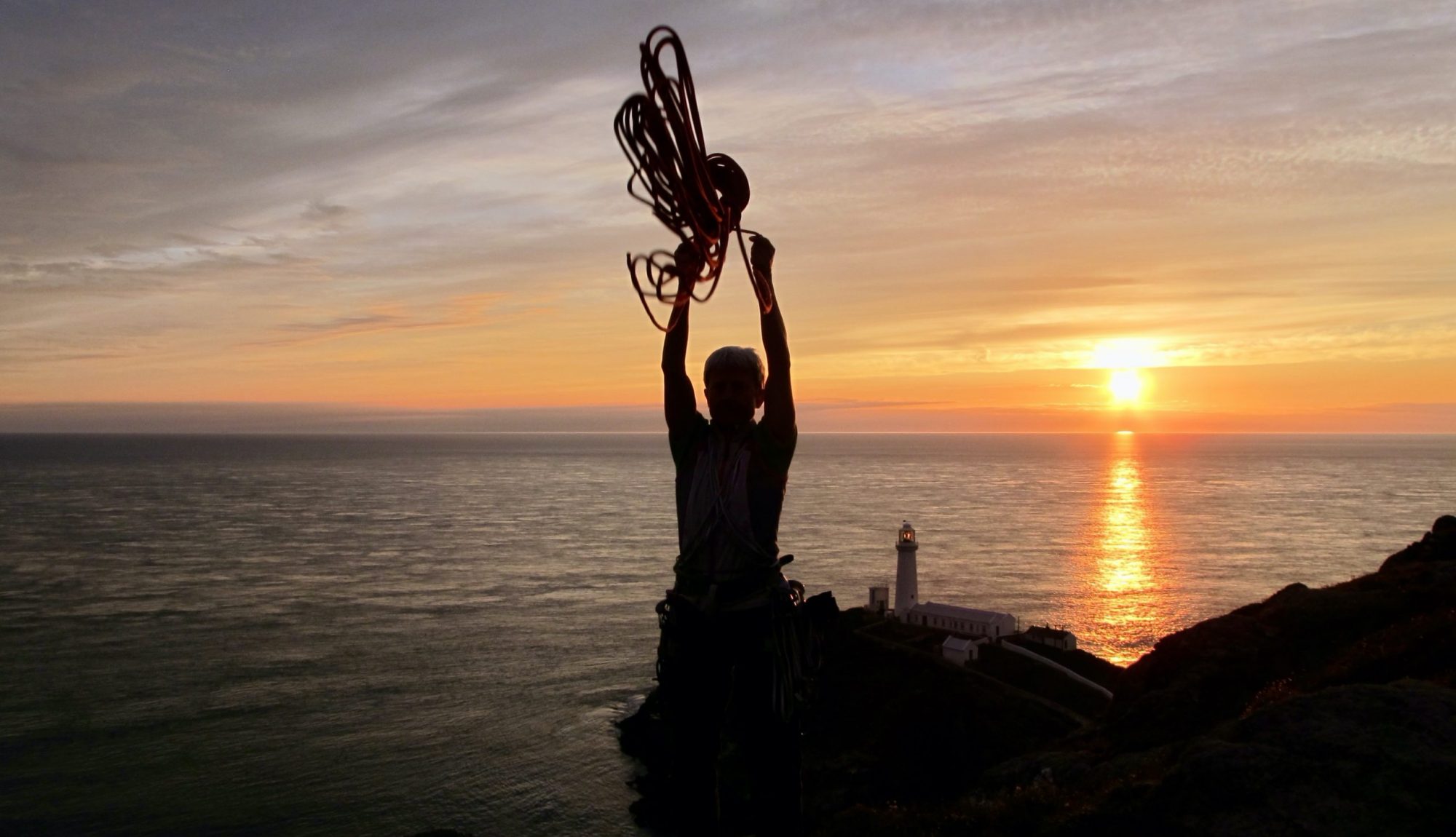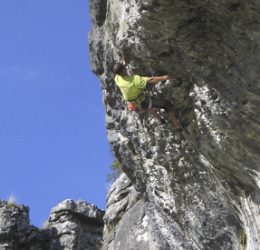
Goldsborough is a superb remote Pennine gritstone outcrop a few miles from Barnard Castle. The rock is of good quality in a pleasant situation overlooking Hury and Blackton reservoirs in the shallow valley of Baldersdale. The crag has a scattering of boulders and short walls on the North face and much bigger series of South facing buttresses all wrapped around a small, rising, moor land summit. Although exposed to any wind, it is quick drying, as it does not suffer from any drainage or seepage. The crag does enjoy visits all year round but it is more comfortable from early spring to late autumn. A pad may prove more useful than ropes at this crag as soloing appears to be the norm however many of the routes do offer placements for protection and there are belay stakes at the top.
History
There are no records of the early development of Goldsborough. It is known that Bentley Beetham climbed here regularly during the 1930s, bringing parties of pupils from his Barnard Castle School. The adventures of the Goldsborough Club, as they were known, are recorded in the Fell and Rock guides to the Lake District. Most of the easier routes were recorded by members of the Eden Valley MC during the late 1970s during work on the first edition of the “North of England Rock Climbing Guide”.

Climbers from Barnard Castle were also active, in particular Paul Carling and Nigs Reader. Motivation was climbed by Reader in 1980, while Carling recorded many testing problems including Enigma, The Thornbird and Long Reach all prior to 1982. Ian Cummins added the bold Green Nigel in 1983 and Nick Clement climbed The Obsessed and Viola.
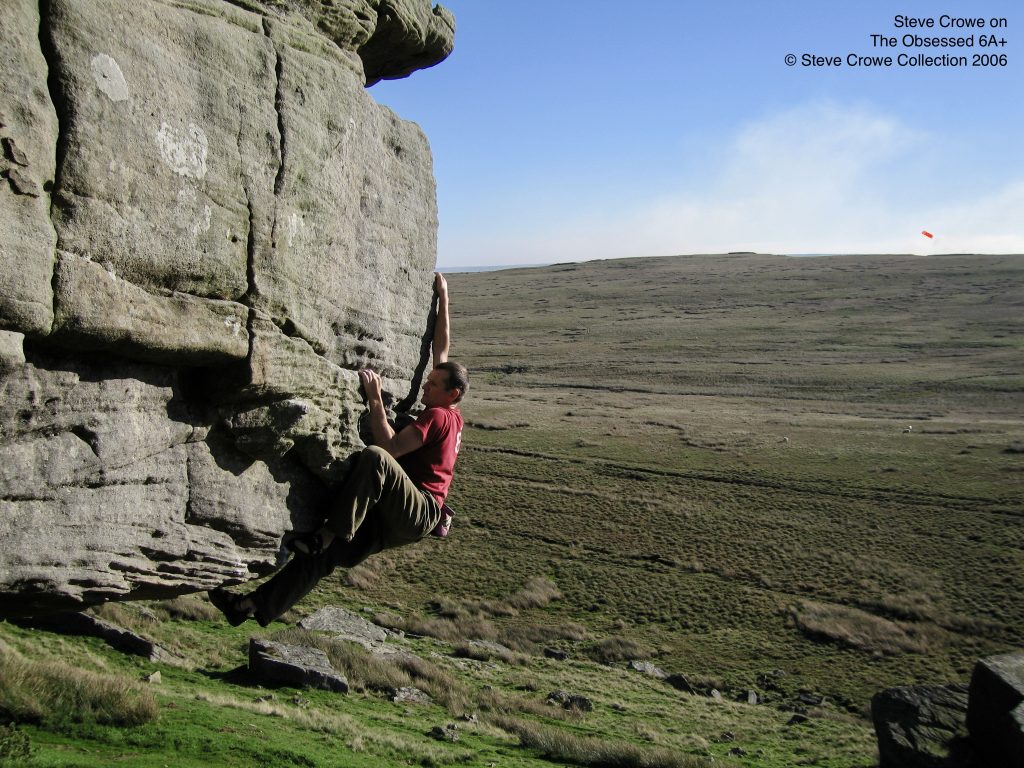
During the mid 1980s Ian Cummins climbed the Footless Traverse on Thin Wall Buttress. Stu Ferguson climbed Flymantle on the North Facing section; Steve Crowe added the more serious variation. Bob Bennett, Steve Crowe and Mark Turner added many new problems while working on the first edition of Climbing in North East England.

Bob Bennett began developing the North East Boulders during 1995 with about 15 problems added by spring 1996. Steve Crowe recorded a number of traverses during the winter of 1995/96 including Askew and Upper Break, although it is possible they were climbed before. Due to bad fingers/work/kids/staleness etc., Ian Cummins had kept a low profile for 5-6 years before surfacing in 1997 to report the hardest problems at Goldsborough to date. Beth’s Traverse from July 1996 and George’s Roof climbed in July 1997 both have become classics.

Andrew Earl traversed the Super Low Level on the Thin Wall Buttress in January 1997 and Steve Dunning extended this in 2001. Dunning added three desperate combinations, Something Burning, Second Coming and Juxtapose around this time. In April 2002 Ian Cummins made the long overdue ascent of Holstein Friesian. Tom Newman has added a fews powerful problems more recently; Mr Motivator 7C, Upside Downtown F7C, Clamp Faster 8A, Plump Master 7C and This One’s For Cummings F7C. Dan Varian left his mark in 2019 with some impressive link ups the best are probably Polo and Clamp Faster both 8A
Bentley’s Buttress

The crag is clearly seen above the road. This is North West Buttress which is a little underwhelming and just to the left is the compact wall of Bentley’s Buttress which has half a dozen worthwhile climbs that may need brushing and are best enjoyed on a warm mid summers evening. The spectacular Flymantle VS 5a tackles the centre of the roof to the left of the photo above. However most folks head straight over the top to the sunny side.
Enigma Buttress
The Swaledale Morris Men is an ungradable one move wonder that is sometimes the first warm up. Both Old Moss 5+ and Enigma 6A+ are much sought after ticks but ascents are hard fought for. Being West facing the Enigma buttress may be a bit chilly and better saved for a warm down.
Hubris Buttress
The classic climb here Hubris 6A+ fell down. Ian’s Arête is certainly a sandbag at 7A.

Yoke Buttress
Further right Yoke Buttress isn’t especially impressive but it contains a bunch of reasonably easy climbs that are great for warming up on.
Thornbird Buttress
This is the left-hand of the two main impressive buttresses. George’s Roof 7B+ is essentially a direct start to the left arête which is Nick Clement’s The Obsessed 6A+. Fiddler on the Roof E1 5c is much sought after. A powerful start across the huge roof leads to an easier finish. The Thornbird and Green Nigel share the same powerful start and grade E2 6a. Be sure they are clean because they are all quite bold. Dan Varian’s Clamp Faster 8A is a more recent addition.

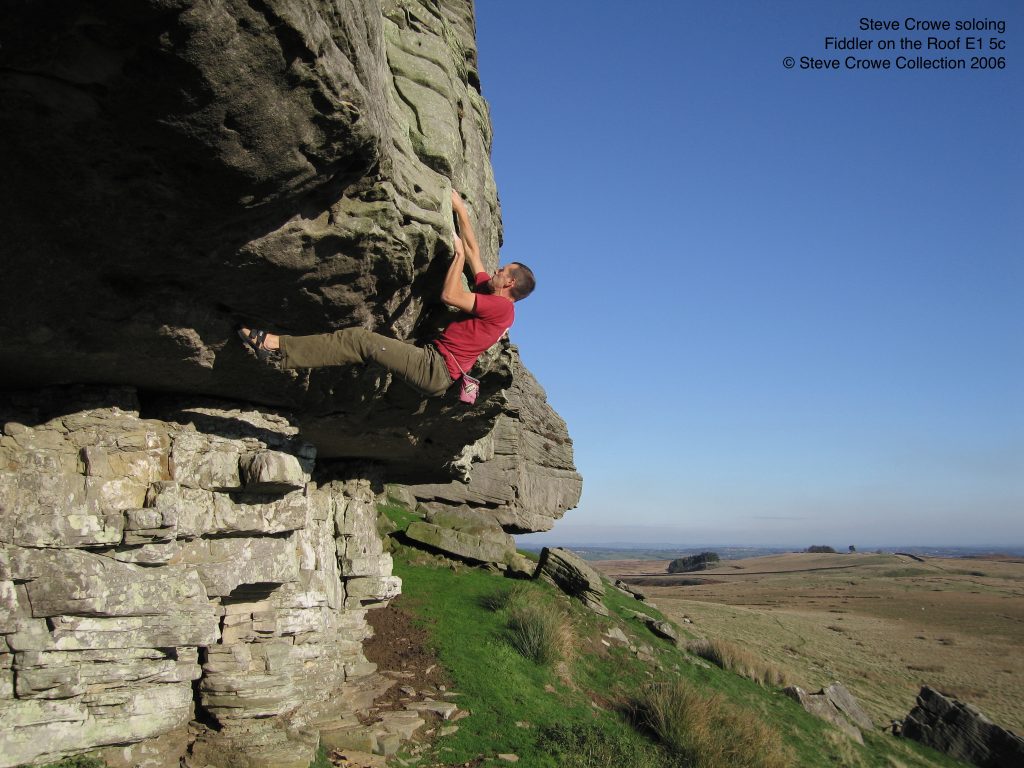
The Alcove
Half a dozen climbs sit in the alcove between the two main buttresses.
Thin Wall Buttress

This is the main buttress for the strongest boulders with lots of powerful problems climbing out across the steep roof however there’s plenty for mere mortals to try. The hanging left arete, Fiddler’s Arete HVS 5b, is the most popular climb at Goldsborough. The start is the hardest but the finish feels high and is well protected if you have dragged a rope behind you. Fiddler HVS 5a starts to the right of the arête then eventually joins the arete high up, a direct finish is a tricky E1 5b. The steep right arête is climbed by Jumping Jack Flash 6A+, if you’re successful on this be sure you have someone ready to take a picture. If you found that too easy then try starting on Beth’s Traverse 7C. This crimpy test piece is much sought after but requires impressive finger strength.

Baldersdale Buttress
The final south facing wall, Baldersdale Buttress is a pleasant buttress with some shorter problems. The tricky Plagiarist and Plagiarist Left-hand both get 6A, This One’s for Bill 7A+ climbs the centre of the wall on poor crimps. The arete is climbed by Bass Special Font 4+, it’s easier than it looks but no giveaway.

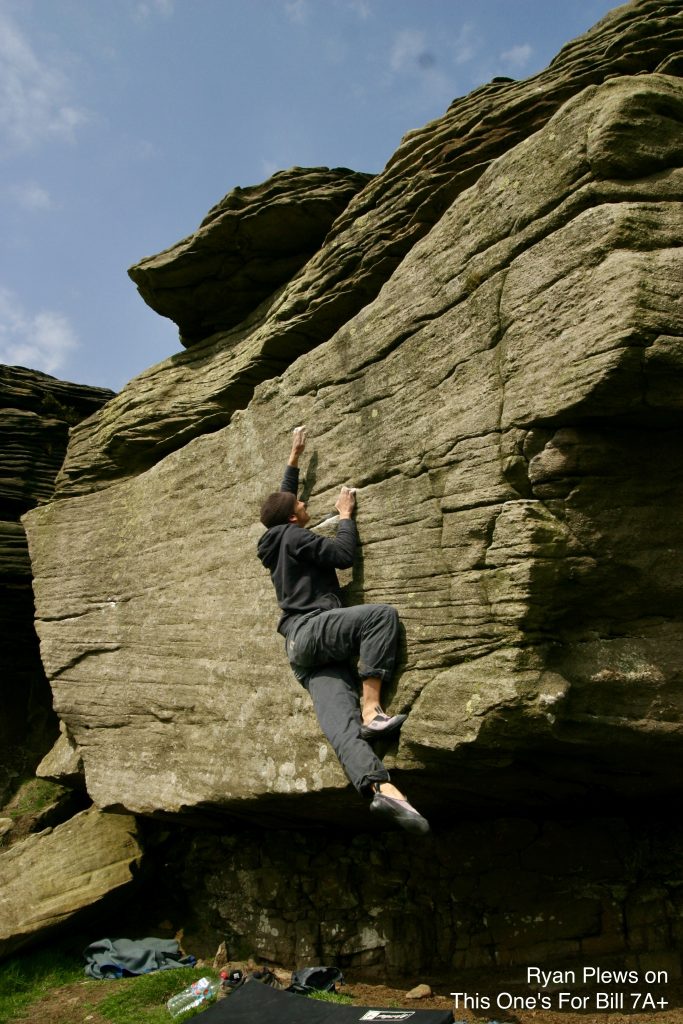
South East Boulder.
There’s a clutch of testing short problems and some tricky traverses on the South East Boulder including the popular The Tide is Turning 6C which is harder than it first looks.

The North Face
The climbing on the north face is on smaller and less frequented boulders and short walls. These climbs are best enjoyed on a mid summer evening but take a brush as they are a bit neglected unfortunately.

Guidebooks
There is no definitive guidebook currently in print. These are all selective guides which includes Goldsborough;
Yorkshire Gritstone Bouldering Vol 2 by Steve Dunning & Ryan Plews 2011
Northern England by Chris Craggs. Rockfax 2008
Mini Guide PDF
